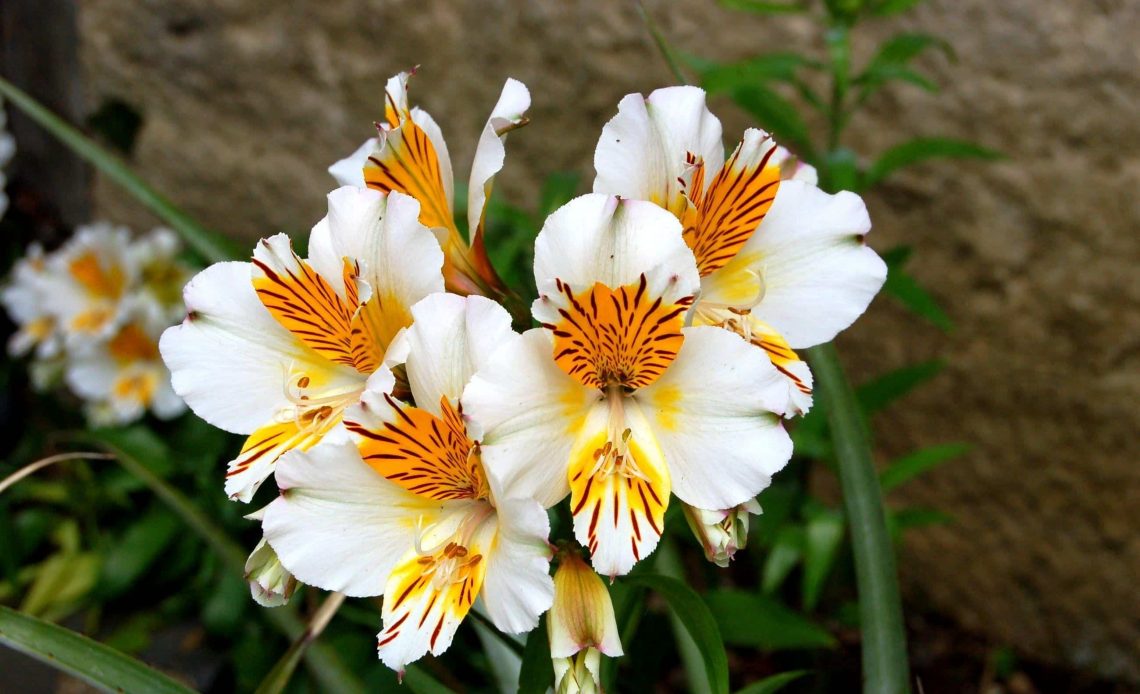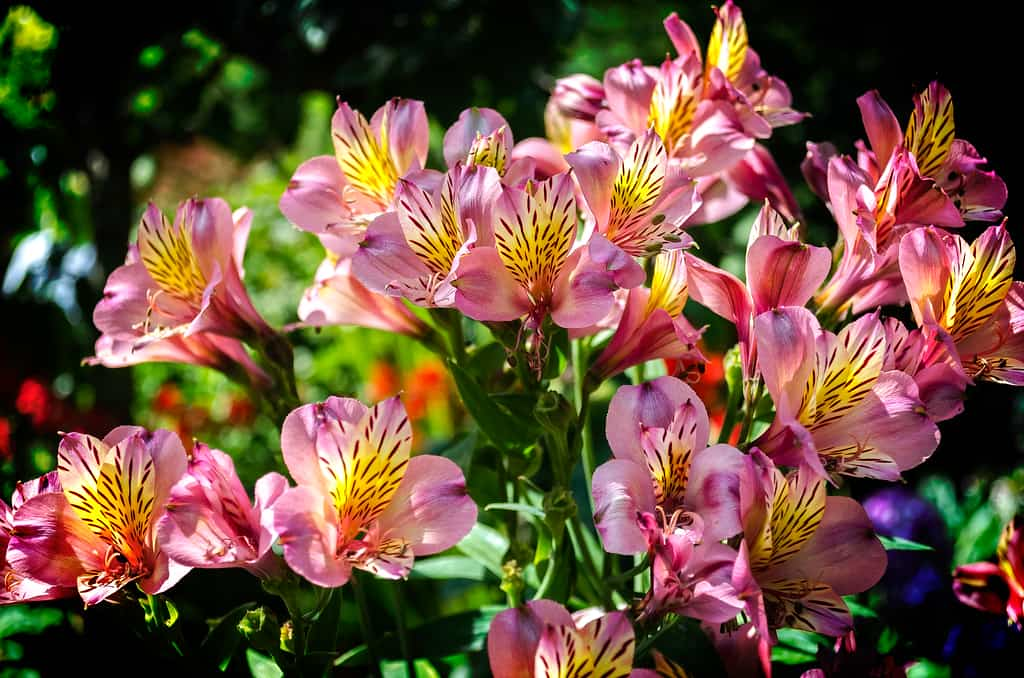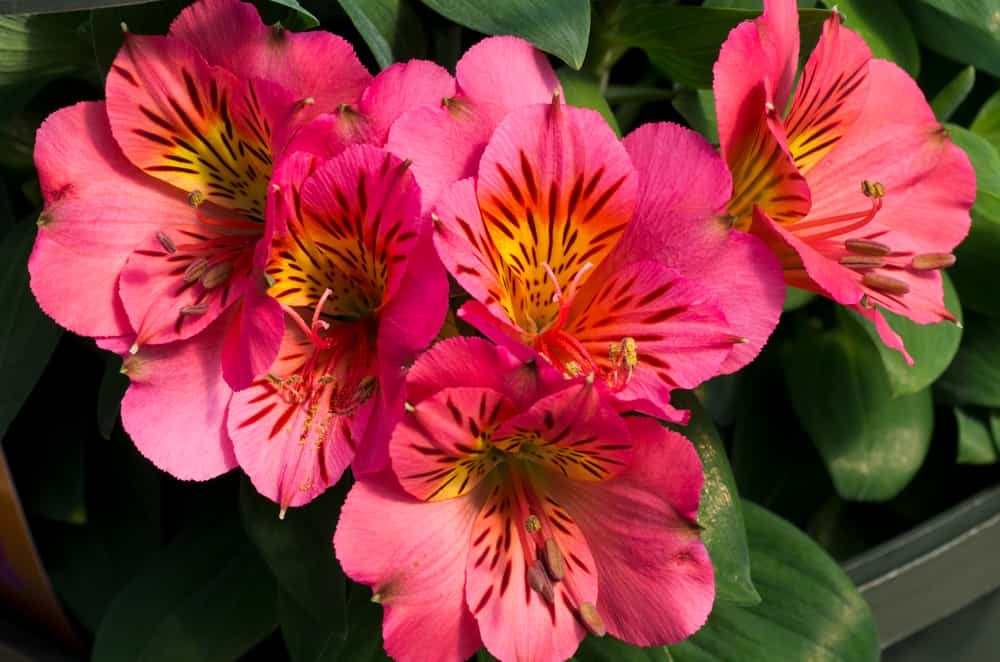
Immerse yourself in the world of Alstroemeria, also known as Peruvian lilies. These breathtaking blooms captivate with their vibrant colors and long-lasting presence, making them a favorite among gardeners and florists alike. This guide delves into the captivating world of alstroemerias, exploring their varieties, care requirements, and ideal companions to create a thriving display in your garden or a stunning arrangement in your home.za<zd
What is Alstroemeria?
Embrace vibrant and long-lasting blooms with the stunning Alstroemeria, also known as the Peruvian Lily. This low-maintenance flowering plant is a gardener’s delight, offering a kaleidoscope of colors throughout the summer.
Native to South America, Alstroemeria boasts trumpet-shaped flowers in shades of orange, yellow, red, pink, purple, and white. These eye-catching blooms not only brighten your garden but also attract butterflies and hummingbirds, creating a buzzing haven.
Although known as the Peruvian Lily, Alstroemeria is not a true lily. So, don’t be confused by the name. Several species exist within the Alstroemeria genus, each offering unique characteristics. Some varieties boast speckled or striped petals, adding visual intrigue to your landscape.
Alstroemeria Peruvian Lily Overview

| GENUS NAME | Alstroemeria |
| COMMON NAME(S) | Peruvian Lily, Lily of the Incas |
| PLANT TYPE | Herbaceous perennial |
| LIGHT | Full sun to partial shade |
| HEIGHT | 2-3 feet (0.6-0.9 meters) |
| WIDTH | 1-2 feet (0.3-0.6 meters) |
| ALSTROEMERIA FLOWER COLOR | Orange, yellow, red, pink, purple, lavender, salmon, white (hybrids offer wider variety) |
| FOLIAGE COLOR | Green |
| SEASON FEATURES | Blooms in summer |
| SPECIAL FEATURES | Long-lasting blooms (up to 14 days), attracts butterflies and hummingbirds |
| ZONES | USDA Hardiness Zones 6-10 |
| PROPAGATION | Division of tubers or seeds (division is preferred) |
| PROBLEM SOLVERS | Watch for slugs and snails, treat for fungal diseases if necessary |
| USES | Cut flowers, borders, containers |
Types of Alstroemeria
There are more than 120 species of alstroemeria, and many cultivars and hybrids have been developed for different purposes. The most common varieties grown for gardens and bouquets include:
Alstroemeria aurea
Alstroemeria aurea, also known as the Golden Peruvian Lily, is a species of flowering plant native to Chile and Argentina. It is a popular choice for gardens and bouquets due to its stunning bright yellow flowers with brown markings.
Alstroemeria psittacina
Alstroemeria psittacina, commonly called the Parrot Lily, is a stunning flowering plant native to Brazil and Argentina. It’s known for its vibrant red and orange blooms with speckles, resembling a parrot’s feathers, hence the name.
Alstroemeria ligtu
Alstroemeria ligtu, also known as the White Peruvian Lily, is a species of flowering plant native to Peru, northwest Argentina, and central Chile. It is prized for its delicate white flowers with purple stripes, adding a touch of elegance to any garden or bouquet.
Why Should I Grow Alstroemeria?
- Beautiful and long-lasting blooms: Alstroemeria boasts stunning trumpet-shaped flowers in a diverse range of colors, adding vibrancy and elegance to your garden. They are also known for their exceptional vase life, lasting up to 14 days after cutting.
- Easy to grow and maintain: These low-maintenance plants are suitable even for beginner gardeners. They thrive in well-drained soil with moderate watering and prefer full sun to partial shade.
- Versatility in use: Alstroemeria adapts well to different settings. They can be planted in borders for a striking display, flourish in containers for balconies or patios, and provide a steady supply of beautiful cut flowers for your home.
- Attracts pollinators: These colorful blooms are a magnet for butterflies and hummingbirds, adding a touch of life and movement to your garden while promoting pollination.
- Hardiness: Depending on the specific variety, alstroemeria can be quite hardy, surviving in colder climates (USDA Hardiness Zones 6-10) with proper winter protection.
Alstroemeria flower meaning also adds to its appeal. In Victorian times, these flowers symbolized friendship devotion, loyalty and everlasting love, making them a popular choice for expressing deep affection.
With their combination of beauty, ease of care, diverse uses, and rich symbolism, alstroemeria makes a fantastic addition to any garden, offering long-lasting enjoyment and a vibrant pop of color throughout the summer season.
Alstroemeria Care Tips

Alstroemerias are surprisingly low-maintenance and thrive in most gardens. With proper care, they’ll reward you with a season of stunning blooms. So, let’s delve into some essential tips for growing these delightful flowers.
Light: To flourish, alstroemerias crave full sun. However, in hotter climates, they appreciate some afternoon shade.
Soil and Water: Well-drained soil is crucial for alstroemerias. They dislike soggy conditions and are prone to root rot. Water regularly during the growing season, allowing the soil to dry slightly between waterings.
Fertilizer: For optimal blooms, apply a balanced fertilizer every few weeks during the growing season.
Pests and Problems: Alstroemerias are generally pest-resistant. However, they can be susceptible to slugs and snails. Companion planting with herbs like lavender can help deter these unwelcome guests.
Companion planting is a great way to create a harmonious and vibrant garden. Alstroemerias pair well with other sun-loving flowers like daylilies, coneflowers, and lavender. In bouquets, they beautifully complement roses, lilies, and sunflowers.
While alstroemerias are generally safe for most pets, it’s important to note that they are mildly toxic to cats. If you have feline companions, it’s best to avoid planting these flowers or keep them in cat-inaccessible areas.
By following these simple tips, you can enjoy the dazzling beauty of alstroemerias for years to come.
Alstroemeria Companion Plants
Alstroemeria, the breathtaking Peruvian Lily, isn’t just a solo act. These summer bloomers thrive alongside a variety of complementary plants, creating a vibrant tapestry in your garden and stunning arrangements in your home.
Blooming in harmony:
- Roses: The elegance of roses pairs beautifully with the exotic charm of Alstroemeria. Both require full sun and well-drained soil, making them ideal companions.
- Salvia and Lavender: These fragrant choices add a sensory dimension to the garden. Their similar sun and soil preferences ensure a harmonious coexistence. Salvia’s vibrant blooms contrast beautifully with Alstroemeria’s colors, while lavender’s soft purple creates a ** calming effect**.
- Sedum and Ornamental Grasses: These low-maintenance options provide texture and form to the garden. Sedum’s succulent foliage complements Alstroemeria’s vibrant blooms, while ornamental grasses add a graceful touch.
Beyond the garden:
- Alstroemeria’s long-lasting blooms make them excellent cut flowers. Combine them with asters, dahlias, phlox, and geraniums for vibrant and diverse bouquets.
- Daylilies are another perfect partner for cut flower arrangements. Their similar bloom times ensure a cohesive and long-lasting display.
Remember:
- Consider plant heights and bloom times when choosing companions. Stagger your plantings for a continuously blooming display.
- Matching water and sunlight needs is crucial for plant success. Group plants with similar requirements for easier maintenance.
With careful planning, you can create a thriving and visually stunning garden or bouquet using Alstroemeria and its perfect partners. Embrace the diversity and enjoy the long-lasting beauty these flowering combinations offer.

Alstroemerias are my absolute favorite! They’re so vibrant and cheerful. I love how long they last as cut flowers. This post is a great resource for learning more about them.